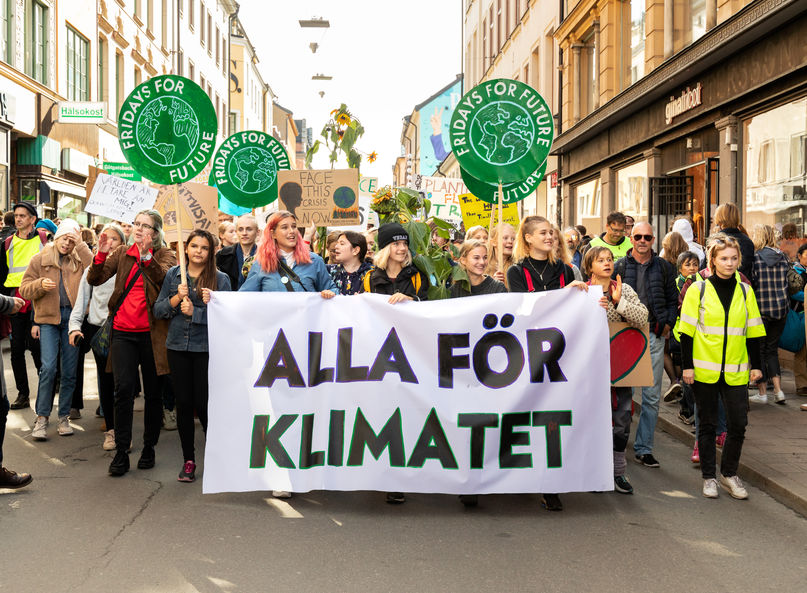Allysia Finley, a regular Wall Street Journal contributor, posted an article a couple weeks ago titled “The Climate Crusaders Are Coming for Electric Cars Too,” a prophesy consistent with a concerning social control trend I have witnessed as well.
It’s not that “green” lobbies have the necessary public support to succeed in consigning most of us to trade freedoms we take for granted for their enchanted “progressive” visions of ant farm utopia — at least not yet — but don’t count them out just yet either.
Ms. Finley referred to a report issued by the University of California, Davis and “a network of academics and policy experts” called the “Climate and Community Project” which concludes that meeting the left’s net-zero climate goals to save the planet may require a few economic and social life-shifting changes we might not have realized come with the deal.
Like, for example, “densifying low-density suburbs while allowing more people to live in high-density urban spaces” which will simultaneously make public transit more useful and efficient.
This, in turn, will reduce “car dependency,” which can essentially be compelled by reducing “financial subsidies for private vehicles,” such as on-street and free parking and imposing charges on pickup trucks and SUVs (including electric ones.)
According to their assessment, the auto sector’s “current dominant strategy,” which involves replacing gasoline-powered vehicles with EVs won’t be nearly enough without decreasing car ownership and use.
Besides, who really needs them anyway when we there will be all those favored new electric trolleys and natural gas-banning shoe box efficiency apartments?
Except for maybe some of us wondering where all that electricity will come from.
PJM Interconnection, one of the nation’s largest grid operators, forecasts that as power demands continue to increase, the current government policy push for unreliable and inadequate renewable energy sources is putting power supplies across 13 eastern states in its 65 million customer territory in jeopardy of “energy imbalance” (shortages and blackouts).
This circumstance is worsening as coal and natural gas plants retire largely due to policy-driven steep costs of compliance with Biden administration EPA regulations including a proposed “good neighbor rule” that is expected to be finalized this month that will force about 10,500 MW of fossil fuel generation to shut down.
Add to this, environmental, social and governance (ESG) pressures that are killing coal investments, with Illinois and New Jersey climate policies projected to cause a major 8,900 MW loss.
On top of supply shortages, consider that our aging power grids have limited capacity to handle rapidly transitioning power demands and dependence for transportation (public and EV), home conditioning (heat and cooling), cellphones and computing, and electrified lifestyles in general.
According to data compiled by The Wall Street Journal, there were fewer than two dozen major U.S. power disruptions in 2,000, compared with more than 180 in 2020.
Regarding those other worrisome trends I previously mentioned, the Biden administration has proposed that the Department of Housing and Urban Development reinstate an Obama-era “Affirmatively Furthering Fair Housing” (AFFH) rule that essentially allows the federal government to preempt local land use and single family zoning policies.
AFFH had given rise to numerous legal challenges — not disputing recognized legitimate merits of prohibiting housing discrimination based upon race, religion, national origin, sex, (and as amended) handicap and family status — but rather for extending overreach of federal government control of independent local governance on a truly draconian scale.
As a condition for receiving federal assistance, AFFH gave HUD a weapon of power to force any community that received federal taxpayer funds to meet racial distribution quotas.
AFFH also contravened a Supreme Court ruling that affirmed the Fair Housing Act “is not an instrument to force housing authorities to reorder priorities” or to “decree a particular vision of urban development.”
Nevertheless, prohibited or not, New York State’s Westchester County experienced a costly illustrative saga following a lawsuit alleging that its suburban village of Tuckahoe was out of compliance with HUD’s social engineering “vision.”
Westchester’s basic zoning policies were determined to be racially “exclusionary” based upon development restrictions such as building height and area density.
Single-family homes on quarter-acre lots were deemed potentially “discriminatory” — supposedly because minority members might not be able to afford them.
HUD may have been referring here to exclusionary Westchester County homes like the $1.7 million 11-room colonial in Chappaqua purchased in 1999 by Bill and Hillary Clinton.
Speaking of New York, in her Jan. 5, 2022, State of State address, Democratic Gov. Kathy Hochul included a plan to eliminate single family zoning laws plus mandate that municipalities allow a minimum of one accessory dwelling unit on owner-occupied lots in residential zones.
In short, apartments would be encouraged, and local governments would not have the power to stop them.
So finally, what does this really have anything to do with climate “equity”?
Well, according to a Multidisciplinary Digital Publishing Institute report, once-redlined neighborhoods in 108 cities experienced up to 10 deg. Fahrenheit higher daily temperatures than others due to fewer parks, and trees, and proximity to industrial areas which use more electricity.
Presumably, these neighborhoods have a preponderance of populations with the most difficulty covering existing household and living expenses directly driven by the green war on economical fossil energy.
Now somebody please explain how cramming more people together and adding more electrical demands along with perilous reliability will make their lives — anyone’s lives — better?
This article originally appeared at Newsmax
